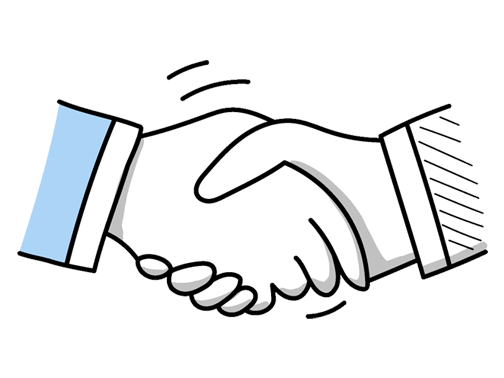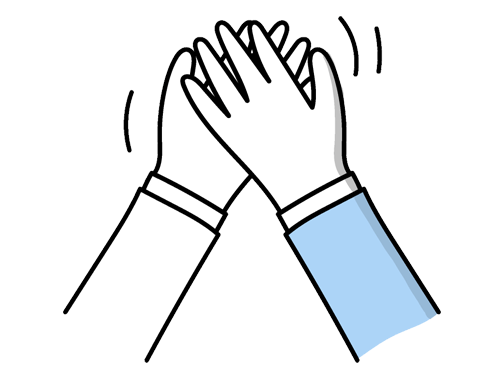Timber Cruiser Interview Questions (2025 Guide)
Find out common Timber Cruiser questions, how to answer, and tips for your next job interview
Practice Interviews Online - Identify your strengths and weakness in a realistic Timber Cruiser mock interview, under 10 minutes
Practice Now »Timber Cruiser Interview Questions
What they want to know is if you prioritize safety and follow proper procedures in potentially dangerous, isolated environments. You need to say that you wear proper protective gear, assess risks like weather beforehand, and maintain communication using devices like radios or GPS to stay connected and prepared for emergencies.
Example: When working in remote forests, I always start by assessing the environment for any potential risks, like unstable terrain or wildlife. I make sure my gear, including GPS and first aid kit, is ready and stay in regular contact with the team through radios. Knowing the nearest emergency routes and having a clear plan for unexpected situations is essential to stay safe and efficient out in the field.
Employers ask this to see if you can communicate precise information and avoid mistakes that could impact decisions. You need to explain that you double-check your measurements and use clear, organized reports to ensure your results are accurate and easy to understand.
Example: To make sure my timber cruising reports are clear and accurate, I focus on careful note-taking in the field and review all measurements twice before finalizing. I organise the data neatly, often using standard templates, so it’s easy to follow. When sharing results, I explain findings clearly and check in with the team to confirm everyone understands, which helps avoid any confusion later on.
Questions like this assess your practical impact on forestry management through your timber cruising work. You need to describe a specific example where your data collection and analysis influenced a decision, explaining your methods and how you communicated findings to the team.
Example: In one project, I conducted detailed timber measurements across a mixed woodland, identifying areas of overstocking and underperforming species. By carefully analyzing growth patterns and volume estimates, I provided clear reports that helped the forestry team adjust thinning schedules and species selection. My findings supported decisions that improved forest health and future yield, showing how accurate field data can directly guide sustainable management practices.
This interview question aims to assess your teamwork and communication skills within the forestry industry. In your answer, briefly describe specific examples where you worked closely with forestry professionals, highlighting your role and how you helped achieve common goals or resolve challenges.
Example: In my previous roles, I regularly worked alongside surveyors and forest managers to assess timber volumes and quality. Clear communication was key, especially when discrepancies arose between field data and estimates. On one occasion, I helped mediate a difference in approach by suggesting a site revisit, which ensured everyone was confident in the final report. It was rewarding to contribute to a shared goal through cooperation and practical problem-solving.
What they want to know is how you manage your time and decisions under pressure to keep the project on track. You need to say that you assess each issue’s urgency and impact, organize tasks with a clear plan or checklist, and stay flexible by adjusting priorities as new challenges come up.
Example: When juggling multiple challenges on a timber cruising project, I first gauge which issues could cause delays or affect safety. I then map out the tasks, tackling the most critical ones early while keeping a flexible approach. If new information comes up—say unexpected weather or access problems—I quickly adjust my plan to keep things on track and ensure accurate data collection throughout.
What they want to know is if you understand the key tools of the trade and how to use them accurately in various conditions. You need to mention essential equipment like diameter tapes, clinometers, and GPS devices, explain how to properly use and maintain them, such as calibrating the clinometer before measuring, and show your ability to adapt techniques in challenging environments.
Example: A timber cruiser relies on tools like diameter tapes, clinometers, and GPS devices to accurately measure tree dimensions and plot locations. Using a diameter tape correctly ensures precise girth measurements, while the clinometer helps gauge tree height even on uneven ground. Keeping equipment clean and calibrated is crucial for reliability. Also, adapting to conditions—like using waterproof gear in wet weather—helps maintain efficiency and accuracy in the field.
Interviewers ask this question to see if you can share information clearly and work well with others under challenging conditions. You need to describe a specific situation where your clear communication helped solve a problem or keep a project on track, focusing on your role and the positive result.
Example: During a timber survey, I noticed discrepancies in the initial data. By clearly discussing these concerns with the team on-site, we quickly clarified measurements and updated our reports. This open communication helped avoid costly errors, ensured accurate timber valuation, and kept the project on schedule. It showed me how a simple conversation can make a big difference in the final result.
This interview question helps assess your awareness of safety risks and your ability to prevent accidents in timber cruising. You need to explain how you identify hazards, use proper PPE, and follow communication protocols to ensure safety and respond quickly to emergencies.
Example: When out in the field, I stay alert to risks like uneven terrain and falling branches. I wear appropriate gear and make sure tools are in good condition to avoid mishaps. It’s important to keep clear communication with the team, especially if someone’s working alone or in remote spots. I’m also familiar with emergency procedures, so if anything does happen, help can be summoned quickly and effectively.
What they want to know is that you prioritize safety and understand the risks in the field. You need to say that you follow safety protocols, stay aware of your surroundings, and communicate clearly with your team at all times.
Example: When out in the field, I’m always aware of my surroundings and encourage the team to do the same. We use proper protective gear and communicate regularly to stay connected, especially in remote areas. For example, I make sure everyone knows the plan and any hazards before starting. It’s about staying alert, prepared, and looking out for each other to keep everyone safe.
What they want to know is that you prioritize precision and reliability in your data collection to ensure trustworthy results. You need to say that you consistently calibrate your measurement tools, cross-check data with previous records, and keep organized, detailed field notes for accuracy and verification.
Example: To ensure accurate data collection, I rely on well-maintained tools and stick to proven measurement techniques. I cross-check my findings by comparing them with previous records or nearby plots, which helps catch errors early. Keeping detailed notes and using organised data sheets in the field also makes reviewing and reporting much smoother. For example, when timber volumes don’t seem right, I double-check measurements before leaving the site.
Hiring managers ask this to see how you handle real-world problems in the field where conditions can change unexpectedly. You need to explain how you quickly assess the situation, take practical steps to adapt your plan, and learn from the experience to improve future surveys.
Example: When unexpected issues arise in the field, I stay calm and quickly evaluate the situation to understand what’s causing the problem. For example, if access to a plot is blocked, I might reroute or adjust data collection methods. I focus on practical solutions that keep the project on track. Afterwards, I consider what the experience taught me to handle similar challenges more smoothly next time.
This question helps the interviewer understand your problem-solving skills and adaptability in challenging work conditions. You need to describe the difficult aspects of a specific timber cruising project, explain how you adapted your approach to overcome those issues, and highlight what you learned to improve future projects.
Example: One of the toughest projects I tackled involved surveying a dense, uneven woodland with limited access. I focused on careful route planning and used a combination of traditional sampling and GPS tech to maintain accuracy. Despite the tough terrain, I kept detailed notes and double-checked measurements, which ensured reliable data. That experience reinforced the importance of adaptability and thoroughness when conditions aren’t ideal.
What they want to know is how you effectively communicate in a team with different backgrounds and roles to ensure smooth collaboration. You should say that you listen actively by summarizing others’ points to confirm understanding, adapt your language to suit your audience, and handle conflicts by mediating to resolve misunderstandings.
Example: When working with different teams, I focus on really listening to what everyone’s saying to grasp their viewpoint. I adjust how I communicate depending on who I’m talking to—whether it’s field crews or office staff—to keep things clear. If any confusion arises, I make sure to address it quickly, often by asking questions or summarising points, so everyone stays on the same page and work runs smoothly.
This interview question assesses your problem-solving skills and ability to adapt in the field. You need to explain a specific challenge you faced during timber cruising and clearly describe the steps you took to overcome it.
Example: During a survey, I once found unexpected dense undergrowth blocking access to key trees. Instead of pushing through blindly, I took a step back, mapped an alternate route around the thicket, and used GPS to maintain accuracy. This approach saved time and reduced physical strain, ensuring we collected reliable data without compromising safety or efficiency.
This interview question assesses your flexibility and problem-solving skills when unexpected challenges arise in the field. You need to explain a specific situation where you adjusted your plan, describe what changed, and how you ensured your work stayed accurate and efficient despite the obstacle.
Example: During a survey in a dense woodland, unexpected heavy rain made access to certain plots unsafe. I quickly adjusted the plan by prioritising accessible areas and used handheld GPS to mark difficult spots for a return visit. This ensured we kept on schedule without compromising safety or data quality. Being flexible in the field is key to delivering reliable results despite unpredictable conditions.
This interview question assesses your practical knowledge and accuracy in evaluating timber resources critical for inventory and management decisions. You need to explain how you measure tree dimensions using tools like diameter tapes and clinometers, assess timber quality by identifying defects, and maintain precise records of your data for analysis.
Example: When assessing timber volume, I start by measuring tree diameters and heights using tools like calipers and clinometers, then apply standard formulas or plot sampling methods to estimate total volume. To gauge quality, I examine factors like bark condition, knots, and signs of disease or rot on-site. All findings are carefully recorded and later analysed to provide an accurate picture of the stand’s value and potential.
Employers ask this to gauge your hands-on knowledge and familiarity with different forest environments, which reflects your ability to perform accurate timber assessments. You need to clearly mention your specific timber cruising tasks and the forest types you've worked in, showing both skill and relevant experience.
Example: I’ve spent several years conducting timber cruising across mixed woodlands and commercial conifer plantations, mainly in southern England. My work involved measuring tree volumes, assessing stand health, and mapping forest boundaries. I’m comfortable using both traditional tools and modern tech like GPS and laser rangefinders. For example, I recently completed a project estimating timber in a pine forest near the New Forest, which helped guide sustainable harvesting plans.
This question assesses your ability to convey complex information clearly and work collaboratively. You should explain how you simplify data for non-technical team members, share updates regularly through reports or meetings, and listen to feedback to improve communication.
Example: When sharing findings, I focus on breaking down complex data into clear, straightforward points everyone can grasp. I make sure to provide updates promptly, so stakeholders stay informed throughout the project. For example, during a recent survey, I used visuals to highlight key measurements, which sparked useful discussions with the team and helped us adjust our plans efficiently. Keeping communication open ensures everyone’s on the same page.
Employers ask this to see how you maintain clear communication and collaboration, which is crucial for team success and project accuracy. You should explain you use regular briefings to keep everyone updated, actively encourage feedback, and openly share progress and changes to build trust and keep the project on track.
Example: To keep everyone on the same page during a timber cruising project, I make sure to check in regularly, sharing updates clearly and inviting feedback. If someone spots a potential issue or alternative approach, I welcome that input openly. Being upfront about where we stand builds trust and helps the team stay motivated and focused. For example, on a recent survey, quick daily briefings helped us adapt smoothly to changing conditions.
Hiring managers ask this to see if you are proactive about learning and staying current in your field. You need to say that you regularly engage with industry publications, attend workshops or training, and connect with other professionals to keep your skills and knowledge up to date.
Example: I keep up with the latest in timber cruising by regularly reading industry publications and attending local workshops whenever possible. I also find connecting with fellow professionals valuable, whether through online forums or field meetings, as it’s a great way to share practical tips and new tools. For example, learning about drone mapping technology through a colleague recently helped me improve both accuracy and efficiency on site.
Employers ask this question to see how you approach challenges in a practical and methodical way, ensuring accuracy and safety in timber cruising. You need to explain how you quickly identify issues, evaluate options based on key factors like safety and cost, and adapt your methods by learning from past experiences.
Example: When I encounter a challenge in the field, I start by quickly pinpointing the root cause through careful observation and data gathering. I then weigh up different options, considering what’s practical and sustainable. For example, if tree measurements seem inconsistent, I double-check tools and methods before adjusting my approach. After applying a solution, I reflect on the results to improve future assessments and avoid similar issues.
This interview question helps the employer understand how you handle high-pressure situations and ensure safety in the field. You need to clearly describe the emergency, the quick actions you took to manage it, and how you prioritized safety and communication.
Example: While conducting a timber survey in a remote area, a colleague suddenly twisted their ankle and couldn’t walk. I quickly assessed the situation, kept them calm, and called for help using my radio. Meanwhile, I administered basic first aid and stayed with them until assistance arrived. It taught me the importance of staying composed and prepared, even when working alone in the field.
Interviewers ask this question to assess your familiarity with modern tools that improve accuracy and efficiency in timber cruising. You need to explain how you use GPS for precise location tracking and GIS for mapping and analyzing forest data to make informed decisions.
Example: In timber cruising, I rely on GPS to accurately pinpoint boundaries and sample plots, ensuring precise data collection in the field. GIS helps me analyze spatial information, like mapping stand conditions and planning efficient routes. For example, using GIS layers allows me to identify areas with specific tree species or assess terrain challenges before heading out, making the entire process more informed and streamlined.
This question helps the interviewer understand your technical qualifications and hands-on experience in timber cruising. Mention any relevant certifications you have earned and briefly describe how you applied those skills during actual timber cruising activities.
Example: I’ve completed formal training in forest mensuration and timber measurement, which gave me a solid foundation in identifying species and estimating volumes accurately. I’ve applied this regularly on site, assessing stands across different terrains in the UK. To stay current, I attend workshops and update my knowledge on sustainable forestry practices, ensuring my assessments reflect the latest industry standards and regulations.
Interviewers ask this question to ensure you prioritize safety and stay updated on important regulations that protect you and your team in the field. You should explain that you regularly review HSE updates, consistently use PPE, and actively share safety information with your colleagues during briefings.
Example: I keep up with UK forestry safety by regularly reviewing guidelines from the Forestry Commission and attending any relevant workshops. On site, I always double-check my equipment and follow protocols to prevent accidents. I also make it a point to discuss safety updates with my team, so we’re all aware and can learn from each other’s experiences. This way, safety becomes a part of our daily routine.
Ace your next Timber Cruiser interview with even more questions and answers
Common Interview Questions To Expect
The interviewer is looking for a brief summary of your background, experience, skills, and career goals. Focus on relevant information related to the job and company.
Example: Sure! I have a background in forestry and have been working as a timber cruiser for the past 5 years. I have experience in assessing timber quality, volume, and value in various forest environments. My goal is to continue honing my skills in timber cruising and contribute to sustainable forestry practices in the UK.
The interviewer is looking for a candidate to demonstrate their skills, experience, and passion for the role. Answers should highlight relevant qualifications and how they align with the job requirements.
Example: Well, I have a strong background in forestry and timber management, with a degree in Environmental Science. I also have experience in conducting timber cruises and assessing forest resources. I am passionate about sustainable forestry practices and believe I can bring valuable expertise to this role.
The interviewer is looking for your long-term career goals, ambition, and commitment to the company. Answers should demonstrate a desire for growth and development within the organization.
Example: In five years, I see myself taking on more responsibilities within the company, possibly leading a team of timber cruisers. I am committed to continuously improving my skills and knowledge in the forestry industry, and I hope to contribute to the growth and success of the organization. Ultimately, I aim to become a valuable asset to the company and advance my career in timber cruising.
The interviewer is looking for insight into your long-term aspirations and how they align with the company's goals. Be honest, specific, and show ambition.
Example: My career goal is to become a senior timber cruiser within the next five years. I want to continue honing my skills in timber assessment and data collection, ultimately contributing to the sustainable management of forests in the UK. I am excited about the opportunity to grow with this company and make a positive impact on the environment.
The interviewer is looking for your commitment to ongoing learning and growth in your field. You can answer by discussing courses, certifications, conferences, or other ways you plan to stay current in your industry.
Example: I plan to continue my professional development by attending forestry conferences and workshops to stay updated on industry trends. I also aim to pursue certifications in timber cruising techniques to enhance my skills. Additionally, I am considering enrolling in online courses related to sustainable forestry practices.
Company Research Tips
The company's official website is a treasure trove of information. Look for details about the company's history, mission, and values. Pay special attention to any sections related to forestry or timber cruising. This will give you a sense of the company's approach to this work and any unique methodologies or technologies they might use. Also, check out any news or blog sections to stay updated on recent developments or projects.
Tip: Don't just skim the surface. Dig deep into the website to find information that might not be immediately apparent. Look for downloadable resources, white papers, or case studies.
Social media platforms can provide a wealth of information about a company. Look at the company's posts on platforms like LinkedIn, Twitter, and Facebook. This can give you insights into the company culture, recent projects, and public perception. Also, look for any discussions or comments about the company on industry-specific forums or groups.
Tip: Use advanced search features on social media platforms to find relevant posts. Also, consider setting up Google Alerts for the company name to stay updated on new mentions.
Industry reports and publications can provide valuable context about the broader timber industry in the UK. This can help you understand the challenges and opportunities the company might be facing. Look for information about trends in timber cruising, such as new technologies or methodologies.
Tip: Use academic databases, industry association websites, and government resources to find relevant reports and publications. Also, consider reaching out to industry experts or academics for their insights.
Understanding a company's competitors can give you insights into its strategic positioning and potential challenges. Look for information about other companies in the UK that offer timber cruising services. Compare their services, methodologies, and technologies to those of the company you're interviewing with.
Tip: Use tools like SWOT analysis to compare the company with its competitors. Also, consider using business databases or directories to find information about competitors.
What to wear to an Timber Cruiser interview
- Comfortable, sturdy shoes
- Clean, well-fitting jeans
- Long-sleeved shirt
- Weather-appropriate jacket
- Minimal jewelry
- Neat, practical hairstyle
- Clean, trimmed nails
- Light, natural makeup if applicable





